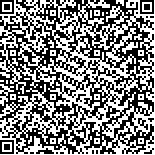|
| 引用本文: | 金岳,李楠,俞骏,方舟,陈新军.基于耳石微化学的南海北部海域两种枪乌贼洄游路线初步研究.海洋与湖沼,2021,52(6):1540-1548. |
| |
|
| |
|
|
| 本文已被:浏览 1459次 下载 902次 |

码上扫一扫! |
|
|
| 基于耳石微化学的南海北部海域两种枪乌贼洄游路线初步研究 |
|
金岳,李楠,俞骏,方舟,陈新军
|
|
1.上海海洋大学海洋科学学院 上海 201306;2.中国水产科学研究院黄海水产研究所 农业农村部海洋渔业可持续发展重点实验室 山东省渔业资源与生态环境重点实验室 青岛 266071;3.大洋渔业资源可持续开发教育部重点实验室 上海 201306;4.国家远洋渔业工程技术研究中心 上海 201306;5.农业农村部大洋渔业开发重点实验室 上海 201306;6.农业农村部大洋渔业资源环境科学观测实验站 上海 201306
|
|
| 摘要: |
| 根据2016年5月于南海北部采集的中国枪乌贼(Uroteuthis chinensis)和剑尖枪乌贼(U.edulis)样本,分析其不同时期耳石微量元素的差异,推测两种枪乌贼类可能的洄游路线。研究结果表明,选取的枪乌贼样本均孵化于2015年10月-2016年2月,其中主要分布于11-12月。中国枪乌贼耳石Sr/Ca随着月份推移呈现出先降低后回升的趋势;剑尖枪乌贼耳石Sr/Ca在不同月份间有更多的变化,稚鱼期的Sr/Ca为最低;中国枪乌贼耳石的Ba/Ca值随着生长而下降,成鱼期迅速上升,剑尖枪乌贼耳石Ba/Ca由仔鱼期后开始逐渐下降,至成鱼期逐步回升。根据耳石Ba/Ca与水深关系确定了不同生长时期对应的水层,随后将对应水层的平均温度与Sr/Ca建立关系,发现除1月孵化的中国枪乌贼外其耳石Sr/Ca与水温均呈正相关,而剑尖枪乌贼耳石Sr/Ca与水温均呈负相关。根据上述结果,最后推测两种枪乌贼的洄游方式均在大陆架范围内进行南北定向洄游。 |
| 关键词: 耳石 微化学 枪乌贼 洄游路径 南海北部 |
| DOI:10.11693/hyhz20210400080 |
| 分类号:S931.1 |
| 基金项目:国家重点研发计划,2019YFD0901404号;国家自然基金面上项目,41876141号;农业农村部外海渔业开发重点实验室开放基金,LOF2021-01号。 |
| 附件 |
|
| PRELIMINARY STUDY ON THE MIGRATION CHARACTERISTIC OF TWO LOLIGO SPECIES IN THE NORTHERN SOUTH CHINA SEA BASED ON OTOLITH MICROCHEMISTRY |
|
JIN Yue1,2,3,4, LI Nan1, YU Jun1, FANG Zhou1,5,6,7,8, CHEN Xin-Jun1,5,6,7,8
|
|
1.College of Marine Sciences of Shanghai Ocean University, Shanghai 201306, China;2.Yellow Sea Fisheries Research Institute, Chinese Academy of Fishery Sciences;3.Key Laboratory for Sustainable Development of Marine Fisheries, Ministry of Agriculture and Rural Affairs;4.Key Laboratory of Fishery Resources and Ecological Environment, Shandong Province, Qingdao 266071, China;5.Key Laboratory of Sustainable Exploitation of Oceanic Fisheries Resources, Ministry of Education, Shanghai 201306, China;6.National Engineering Research Center for Oceanic Fisheries, Shanghai 201306, China;7.Key Laboratory of Ocean Fisheries Exploitation, Ministry of Agriculture and Rural Affairs, Shanghai 201306, China;8.Scientific Observing and Experimental Station of Oceanic Fishery Resources, Ministry of Agriculture and Rural Affairs, Shanghai 201306, China
|
| Abstract: |
| Based on the samples of Uroteuthis chinensis and Uroteuthis edulis collected in the northern part of the South China Sea in May 2016, and the differences of trace elements in statolith from different ontogenetic stages were analyzed. The possible migration routes of the two species were inferred from the trace element study. Results show that the selected samples hatched from October 2015 to February 2016, and concentrated mainly from November to December. Sr/Ca in statolith of U. chinensis showed a trend of decreasing and then rising. There were more changes of Sr/Ca in statolith of U. edulis in different months, and the Sr/Ca of statolith in juvenile stage was the lowest; the statolith Ba/Ca of U. chinensis decreased with individual growth, and increased rapidly in adult stage. The statolith Ba/Ca of U. chinensis decreased gradually from larval stage to adult stage. Using the relationship of statolith Ba/Ca and the water depth, the water layers corresponding to different growth stages were determined, from which the relationship between average temperature of corresponding water layers and Sr/Ca ration was established. It was found that the Sr/Ca ratio of all the statoliths samples of U. chinensis (exclusive of those hatched in January) and U. edulis were negatively correlated with water temperature. At last, the migration pattern of the two loligo species were moving northward-southward in the continental shelf area. |
| Key words: statolith microchemistry Loliginidae migration route the Northern South China Sea |
|
|
|
|
|
